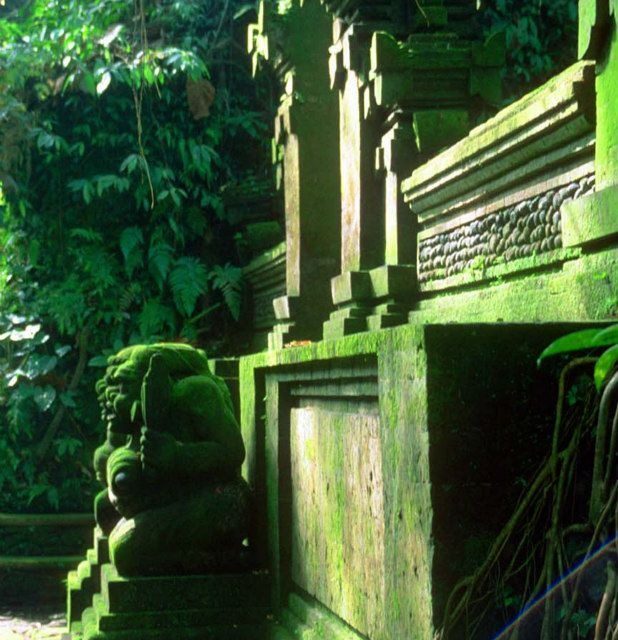When you think of Bali, vibrant rice paddies, serene temples, and enchanting traditional dances likely come to mind. As someone who has spent some time wandering through the lush landscapes of Ubud, the cultural heart of Bali, I can say that it’s a place where the past and present intertwine seamlessly. The traditional dances and historical sites in Ubud not only tell the stories of its rich heritage but also invite you to be part of that narrative.
The Magic of Ubud Traditional Dance
One of my most unforgettable experiences in Ubud was attending a Barong and Kris Dance performance at the Ubud Palace. Picture this: a warm evening, the sun setting behind the temple, casting a golden hue across the vibrant costumes of dancers preparing backstage. I settled onto a wooden bench, surrounded by both locals and travelers; the air was thick with anticipation.
As the dance began, the sound of traditional gamelan music filled the air. The dancers, adorned in exquisite costumes, painted a story of the eternal battle between good (Barong, the lion spirit) and evil (Rangda, the witch). I found myself completely entranced by the rhythmic movements and expressive facial gestures. At that moment, I realized that Ubud’s dances are not just performances; they are powerful narratives that carry centuries of tradition — a feeling that words often fail to convey.
Why You Should Experience Ubud Traditional Dance
If you ever find yourself in Ubud, you absolutely must witness one of these dances. Here are my top recommendations:
– Legong Dance: A beautiful and graceful dance performed by young girls, usually accompanied by a gamelan orchestra. It’s a feast for the eyes with its intricate movements.
– Kecak Fire Dance: This unique performance features a chorus of men chanting “chak” as they reenact a story from the Ramayana by a fire. Yes, there’s drama, and yes, it’s mesmerizing!
For the best experience, try to arrive early. Grab a seat close to the front; trust me, the immersive experience is worth it.
Exploring Historical Sites in Ubud
Beyond the captivating dances, Ubud is a treasure trove of historical sites that encapsulate Bali’s rich cultural tapestry. One must-visit site is the Ubud Monkey Forest, a sanctuary teeming with playful macaques and stunning ancient temples. Walking through this lush forest, I couldn’t help but feel like I had stepped into another era. The ancient temples, overrun by trees and vines, tell stories of the island’s spiritual past.
Another significant site to explore is the Puri Saren Agung, or Ubud Palace. This regal complex showcases traditional Balinese architecture and is still the residence of the royal family. I found myself wandering through the serene gardens, drawn by the intricately carved wooden gates and marble statues. If you visit, don’t forget to take a guided tour; the history behind each structure is truly captivating.
A Personal Reflection
I recall one afternoon, after a morning spent exploring the Tegallalang Rice Terraces, I wandered into the ARMA Museum (Agung Rai Museum of Art). The juxtaposition of ancient and contemporary art in this meticulously curated space left an impact on me. A local guide shared the stories behind various pieces, and as I listened, I felt an echo of my own journey as a traveler — each artwork resonating with the stories we weave in our lives.
The museum isn’t just an art gallery; it offers an insight into Ubud’s artistic evolution and is a reminder of how cultural expressions can shape communities.
Practical Tips for Your Visit
– Dress Appropriately: If you plan to visit temples or traditional dance performances, wear a sarong and a sash. It’s part of the local culture and respect for these sacred sites.
– Stay Hydrated: Ubud can get quite humid. Always carry a water bottle, especially when you’re exploring historical sites.
– Respect the Culture: Engage with locals with an open heart and mind. Don’t hesitate to ask questions; they love sharing their stories.
Final Thoughts
Ubud is more than just a destination; it’s a cultural experience that stays with you long after you leave. The traditional dances are a window into the soul of Bali’s heritage, while the historical sites serve as reminders of the rich tapestry of stories that have shaped this magical place. So, pack your bags and get ready to immerse yourself in an experience that transcends time — you might just find a piece of yourself along the way. Bali’s heart beats in Ubud, and experiencing its traditional dances and historical sites is like reading an enchanting storybook, where every dance, every stone wall, whispers a tale waiting to be heard. Happy travels!






